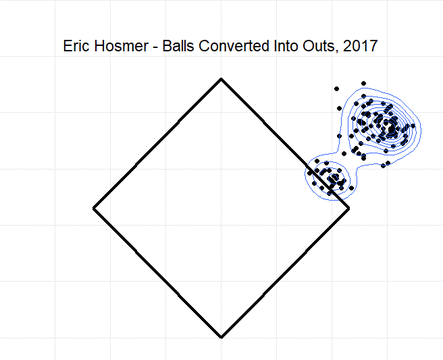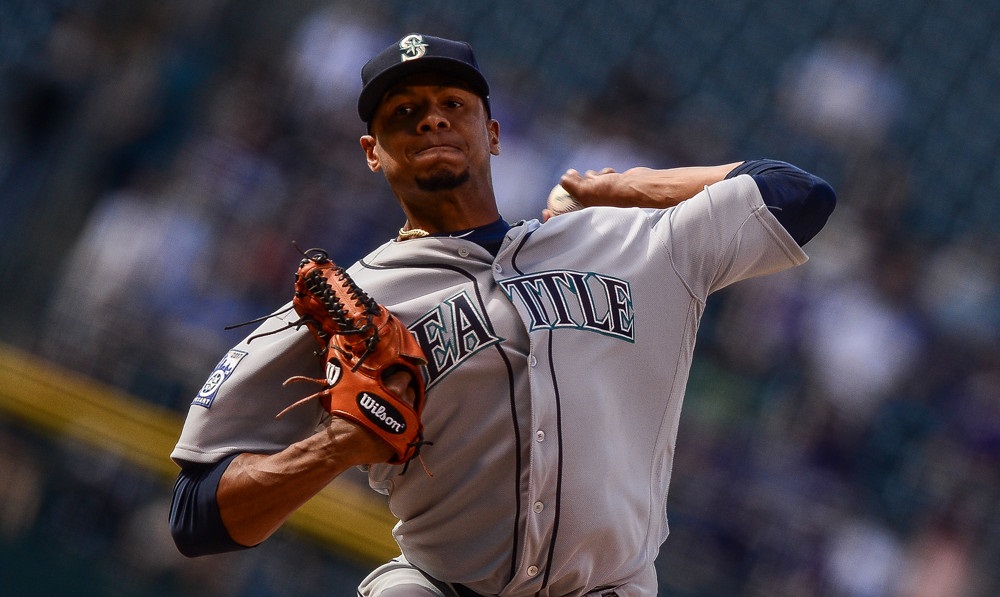BY MARK SIMON
After winning the Home Run Derby, Washington Nationals outfielder Bryce Harper got his hitting back on track in the second half of the season. Since the All-Star Break, he’s hitting .304 with a 1.004 OPS in 55 games. With Harper hitting free agency for the first time this winter, this was significant, as he showed again that he could dominate from that side of the field.
But the defensive side continues to be an issue for Harper, as it has been all season. He’s never recovered from his early-season struggles.
Harper has cost his team 25 runs with his defense this season. He ranks tied for second-worst among all players in Defensive Runs Saved. He has fared poorly both in right field (-16 DRS) and center field (-9).
Range rating gone south
Harper is 16 runs to the negative in his range and positioning rating, meaning quite simply that he’s not recording outs on balls that most right fielders or center fielders turn into outs.
As a right fielder, he ranked third-worst in runs saved specific to both balls hit into the right center gap and along the right field line. As a center fielder, he rates well below average on balls hit into both the left and right center field gap. Some of that is due to positioning, but there’s definitely something to the idea that Harper doesn’t have the range he used to have from watching video.
Negative value from his arm
This will also be the first season in Harper’s career in which the deterrent value of his throwing arm rates poorly. He’s cost his team six runs with his throwing, partly due to his recording only one assist without a cutoff man (last season he had seven).
Two seasons ago, 35 percent of baserunners advanced an extra base on hits to right field that were handled by Harper. That number increased to 45 percent in 2017 and 54 percent this season (MLB average is 50 percent). In center field, 21-of-31 (68 percent) advanced on Harper, 13 percentage points higher than MLB average.
Good Plays and Misplays
Lastly, Harper’s Good Fielding Play and Defensive Misplay numbers are way out of line with his historical norms. Harper has six Good Fielding Plays (GFPs) and 31 Defensive Misplays & Errors (DM&E).
There is precedent for Harper having such a high misplay total, but the six GFPs pale in comparison to just two seasons ago when he had 24 in a comparable number of innings (he had 12 last season.
Harper’s ledger includes six of what SIS calls “wasted throws” that allowed a runner to advance a base, four instances of mishandling a ball after a hit, again allowing runners to advance, and three bad routes, in which he took a poor path to the ball, allowing a ball to drop for a hit. An example of a recent miscue would be slipping and falling on the warning track in a game against the Braves last week, allowing a Ronald Acuna Jr. hit to become a triple instead of a double.
Harper did make a home run robbing catch against Andrew Susac of the Orioles in late May, but such plays have been few this season.
Harper could end up in a new home next season, as he is expected to be a highly- wooed free agent. Perhaps a fresh start there will do him good on the defensive end.


